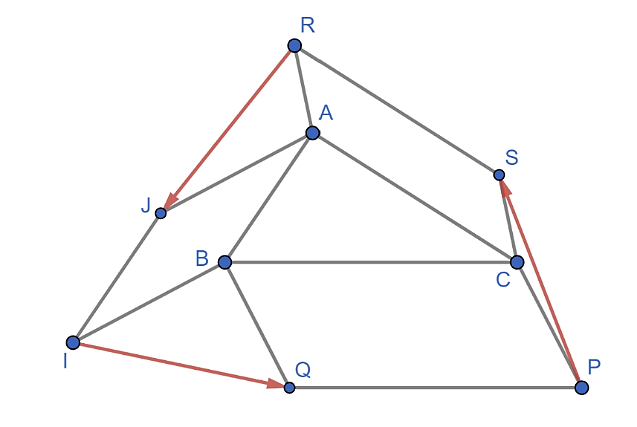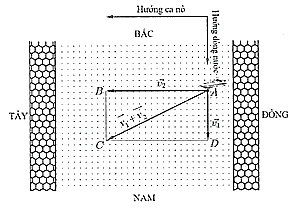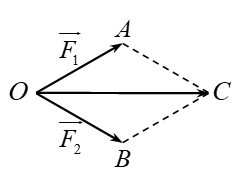Phần II. Trắc nghiệm đúng, sai
Cho tam giác \(ABC\). Bên ngoài của tam giác vẽ các hình bình hành \(ABIJ,BCPQ,CARS.\)
a) \(\overrightarrow {RJ} = \overrightarrow {RA} + \overrightarrow {AJ} \).
b) \(\overrightarrow {IQ} = \overrightarrow {IB} + \overrightarrow {QB} \).
c) \(\overrightarrow {PS} = \overrightarrow {PC} + \overrightarrow {SC} \).
d) \(\overrightarrow {RJ} + \overrightarrow {IQ} + \overrightarrow {PS} = \overrightarrow 0 \).
Phần II. Trắc nghiệm đúng, sai
Cho tam giác \(ABC\). Bên ngoài của tam giác vẽ các hình bình hành \(ABIJ,BCPQ,CARS.\)
a) \(\overrightarrow {RJ} = \overrightarrow {RA} + \overrightarrow {AJ} \).
b) \(\overrightarrow {IQ} = \overrightarrow {IB} + \overrightarrow {QB} \).
c) \(\overrightarrow {PS} = \overrightarrow {PC} + \overrightarrow {SC} \).
d) \(\overrightarrow {RJ} + \overrightarrow {IQ} + \overrightarrow {PS} = \overrightarrow 0 \).
Quảng cáo
Trả lời:

a) Đúng. Theo quy tắc ba điểm, ta có \(\overrightarrow {RJ} = \overrightarrow {RA} + \overrightarrow {AJ} \).
b) Sai. Ta có \(\overrightarrow {IQ} = \overrightarrow {IB} + \overrightarrow {BQ} \).
c) Sai. Ta có \(\overrightarrow {PS} = \overrightarrow {PC} + \overrightarrow {CS} \).
d) Đúng. Do \(CARS\) là hình bình hành nên \(\overrightarrow {RA} = \overrightarrow {SC} \).
Do \(ABIJ\) là hình bình hành nên \(\overrightarrow {AJ} = - \overrightarrow {IB} \).
Khi đó, \(\overrightarrow {RJ} = \overrightarrow {RA} + \overrightarrow {AJ} = \overrightarrow {SC} - \overrightarrow {IB} \).
Do \(BCPQ\) là hình bình hành nên \(\overrightarrow {BQ} = \overrightarrow {CP} \).
Khi đó, \(\overrightarrow {IQ} = \overrightarrow {IB} + \overrightarrow {BQ} = \overrightarrow {IB} + \overrightarrow {CP} \).
Vậy ta có \(\overrightarrow {RJ} + \overrightarrow {IQ} + \overrightarrow {PS} \)\[ = \left( {\overrightarrow {SC} - \overrightarrow {IB} } \right) + \left( {\overrightarrow {IB} + \overrightarrow {CP} } \right) + \left( {\overrightarrow {PC} + \overrightarrow {CS} } \right)\]\(\)
\( = \left( {\overrightarrow {SC} + \overrightarrow {CS} } \right) + \left( {\overrightarrow {IB} - \overrightarrow {IB} } \right) + \left( {\overrightarrow {CP} + \overrightarrow {PC} } \right) = \overrightarrow 0 \).
Vậy \(\overrightarrow {RJ} + \overrightarrow {IQ} + \overrightarrow {PS} = \vec 0\).
Hot: 1000+ Đề thi cuối kì 1 file word cấu trúc mới 2025 Toán, Văn, Anh... lớp 1-12 (chỉ từ 60k). Tải ngay
- Sách - Sổ tay kiến thức trọng tâm Vật lí 10 VietJack - Sách 2025 theo chương trình mới cho 2k9 ( 31.000₫ )
- Trọng tâm Toán, Văn, Anh 10 cho cả 3 bộ KNTT, CTST, CD VietJack - Sách 2025 ( 13.600₫ )
- Sách lớp 10 - Combo Trọng tâm Toán, Văn, Anh và Lí, Hóa, Sinh cho cả 3 bộ KNTT, CD, CTST VietJack ( 75.000₫ )
- Sách lớp 11 - Trọng tâm Toán, Lý, Hóa, Sử, Địa lớp 11 3 bộ sách KNTT, CTST, CD VietJack ( 52.000₫ )
CÂU HỎI HOT CÙNG CHỦ ĐỀ
Lời giải

Gọi \(\overrightarrow {{v_1}} ,\overrightarrow {{v_2}} \) lần lượt là vectơ vận tốc của dòng nước đối với bờ và ca nô đối với dòng nước. Khi đó vận tốc của ca nô đối với bờ chính là tổng \(\overrightarrow {{v_1}} + \overrightarrow {{v_2}} \). Đặt \(\overrightarrow {{v_1}} = \overrightarrow {AD} ,\overrightarrow {{v_2}} = \overrightarrow {AB} \) với \(A\) là vị trí của ca nô.
Vẽ hình bình hành \(ABCD\), ta có: \(\overrightarrow {{v_1}} + \overrightarrow {{v_2}} = \overrightarrow {AB} + \overrightarrow {AD} = \overrightarrow {AC} {\rm{. }}\)
Theo định lí Pythagore, ta có: \(AC = \sqrt {{{10}^2} + {{35}^2}} = 5\sqrt {53} \approx 36,4\;\,{\rm{km/h}}{\rm{. }}\)
Vậy vận tốc của ca nô đối với bờ là xấp xỉ \(36,4\;\,{\rm{km/h}}\).
Đáp án: 36,4.
Lời giải

Giả sử \(\overrightarrow {{F_1}} = \overrightarrow {OA} \), \(\overrightarrow {{F_2}} = \overrightarrow {OB} \).
Theo quy tắc hình bình hành, suy ra \(\overrightarrow {{F_1}} + \overrightarrow {{F_2}} = \overrightarrow {OC} \), như hình vẽ.
Ta có \(\widehat {AOB} = 60^\circ \), \(OA = OB = 50\), nên tam giác \(OAB\) đều, suy ra \(OC = 50\sqrt 3 \).
Vậy \(\left| {\overrightarrow {{F_1}} + \overrightarrow {{F_2}} } \right| = \left| {\overrightarrow {OC} } \right| = 50\sqrt 3 \,\,({\rm{N}}) \approx 86,6\,\,{\rm{(N)}}\).
Đáp án: 86,6.
Lời giải
Bạn cần đăng ký gói VIP ( giá chỉ từ 199K ) để làm bài, xem đáp án và lời giải chi tiết không giới hạn.
Lời giải
Bạn cần đăng ký gói VIP ( giá chỉ từ 199K ) để làm bài, xem đáp án và lời giải chi tiết không giới hạn.
Lời giải
Bạn cần đăng ký gói VIP ( giá chỉ từ 199K ) để làm bài, xem đáp án và lời giải chi tiết không giới hạn.
Câu 6
Lời giải
Bạn cần đăng ký gói VIP ( giá chỉ từ 199K ) để làm bài, xem đáp án và lời giải chi tiết không giới hạn.
Câu 7
Lời giải
Bạn cần đăng ký gói VIP ( giá chỉ từ 199K ) để làm bài, xem đáp án và lời giải chi tiết không giới hạn.
